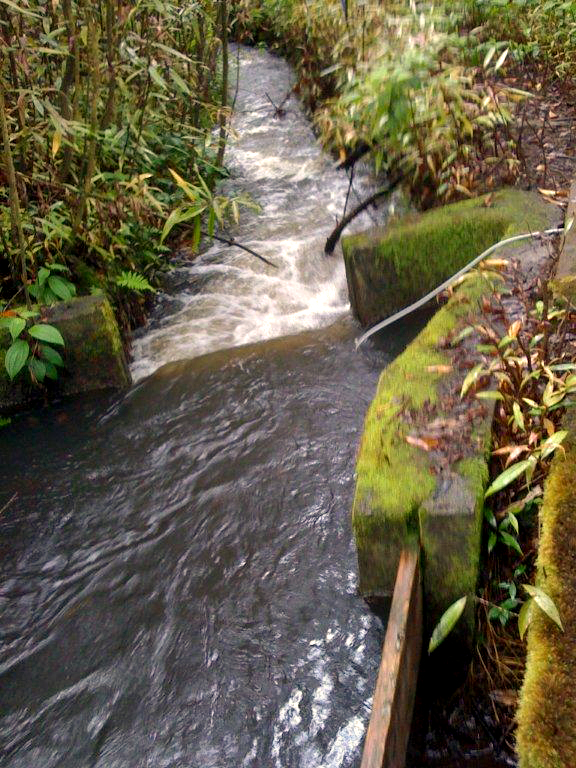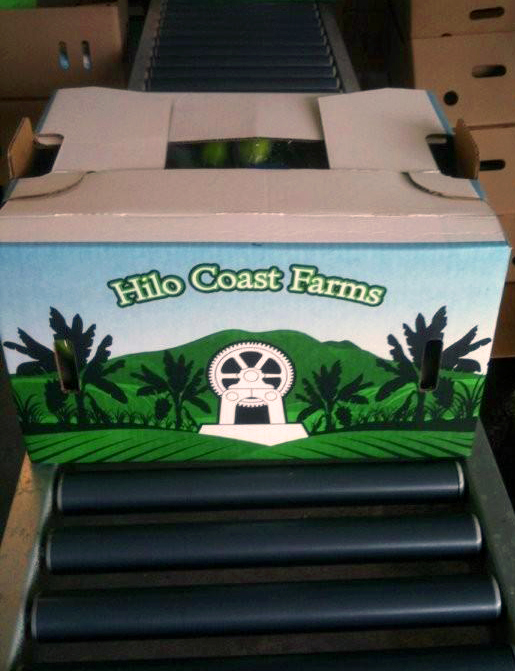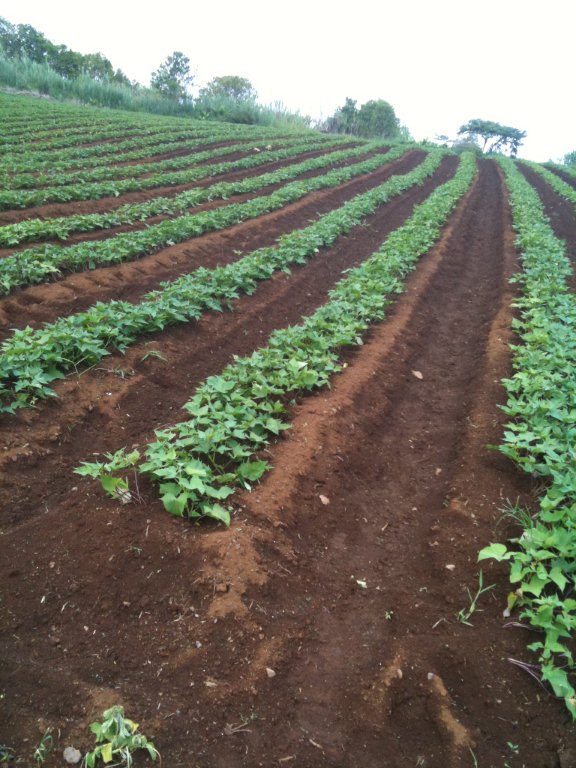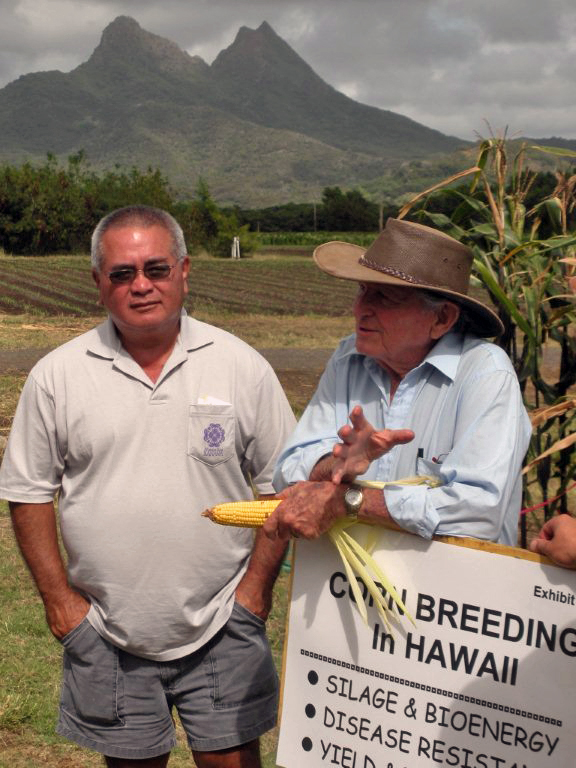We have decided to place the 264-acre portion of Makahanaloa Ahupua‘a we own into agriculture forever. We are working with the Hawaii Land Trust to make this happen by putting a conservation ag easement on it.
 Bananas
Bananas
The world has changed and we must protect our uniquely productive agricultural lands.
This land is particularly productive. A flume runs right through the property, and we are developing a hydro-electic project that will generate 74 KW of electricity continuously.

Flume water, originating from the highest elevation Hilo corner of the property
The soil is more than 10 feet deep in places.
In addition, we have use of a former county spring that used to supply Pepe‘ekeo town. All we need to do is put a valve in to activate the 8-inch cast iron pipe and get fresh clean water under gravity flow.
Tai Wan Gu grows more than 100 acres of sweet potatoes on the land.

More than 100 acres of sweet potato
Danny Loeffler is the largest sweet corn grower on the Big Island, and he rotates crops with Tai Wan. Tom Menezes grows apple bananas, taro, cacao and other crops. These are the best, most productive farmers on the Hilo/Hamakua Coast.
It is very rare to find this combination of resources – the tremendous amount of fresh water that flows downhill by gravity, the soil more than 10 feet deep, and the fact that soon we will be generating electricity for our farming operation there – and it must be preserved for future generations.
Even with it becoming conservation ag land, we can continue farming there.
This whole project is an important part of our Family of Farms project:
I wrote in a recent post about how much I admired Uncle Sonny’s ability to grow great watermelons in a very effective and efficient way.
Over the years, I have noticed that this is a characteristic I see all the time in small farmers’ operations. So how are we going to supply food for Hawaii’s people, in the variety that the community will need, so they won’t need to travel so often? And on the community scale, how will we have enough variety to feed the community around us?
This is how the concept of “Families of Farms” came to me. I asked myself, What happens if we lease lands and hydroponic houses to area farmers?
Our idea is that we would each bring certain resources to make the whole more than the sum of the parts. We believe that this will help each of us make more money together than if we operated independently. So it’s in all of our interests to stay together.
• We would get effective and efficient farmers working with us. Small farmers do not waste anything. And we would get more production than what we could do ourselves
• We would get more variety than we could do ourselves
• We would get more young farmers into farming
• We would bring the water and electricity resource that we have
• We would bring our technical expertise
• We would bring our marketing and distribution system
• We would bring our cooling facilities
We will need to adapt to a new normal. Necessity is the mother of invention.

 Organic Ginger Grower Dean Pinner points out his farm site to Master Cho, the founder of Korean Natural Farming
Organic Ginger Grower Dean Pinner points out his farm site to Master Cho, the founder of Korean Natural Farming











